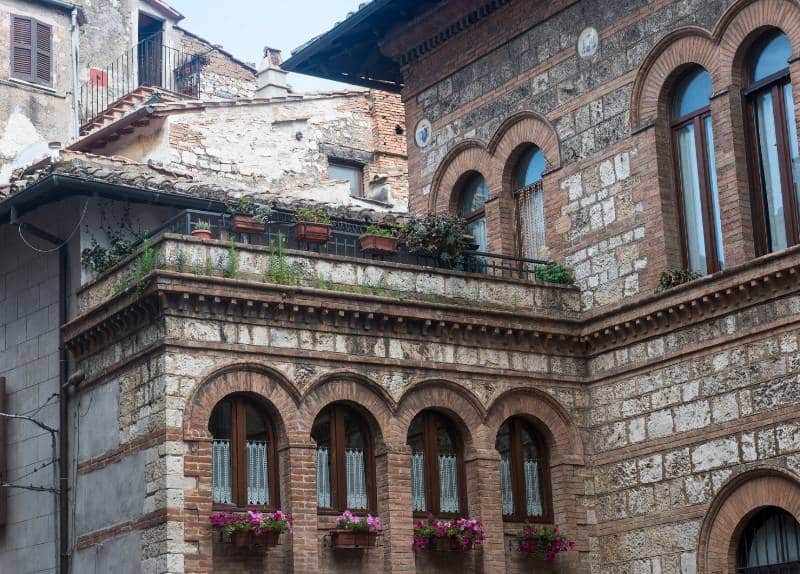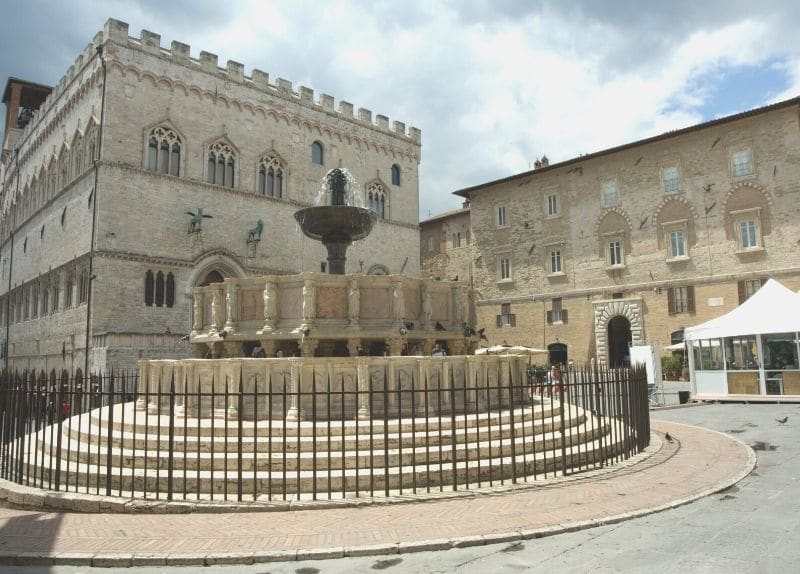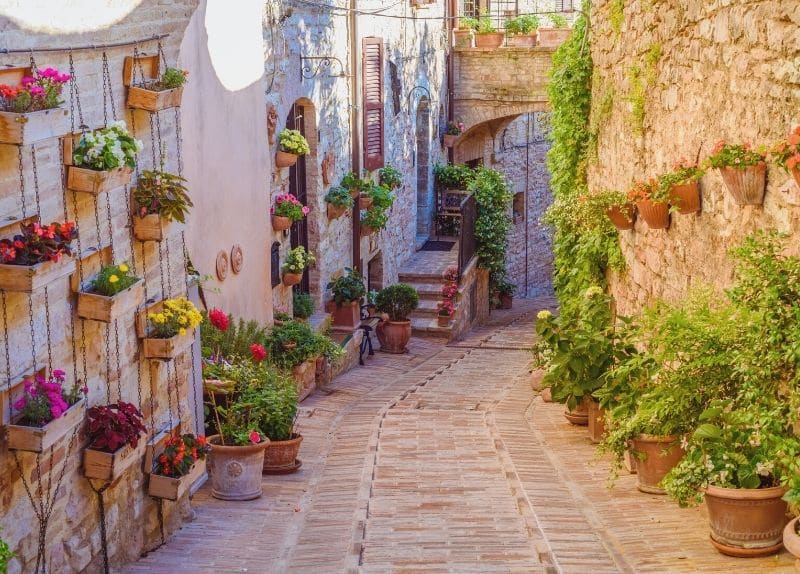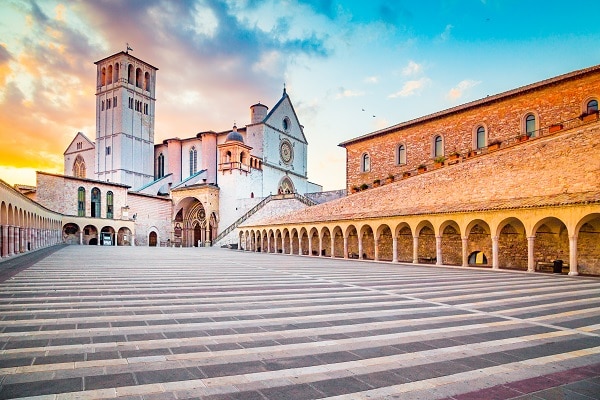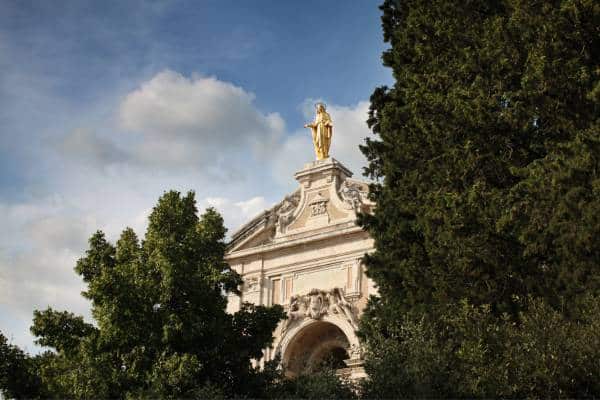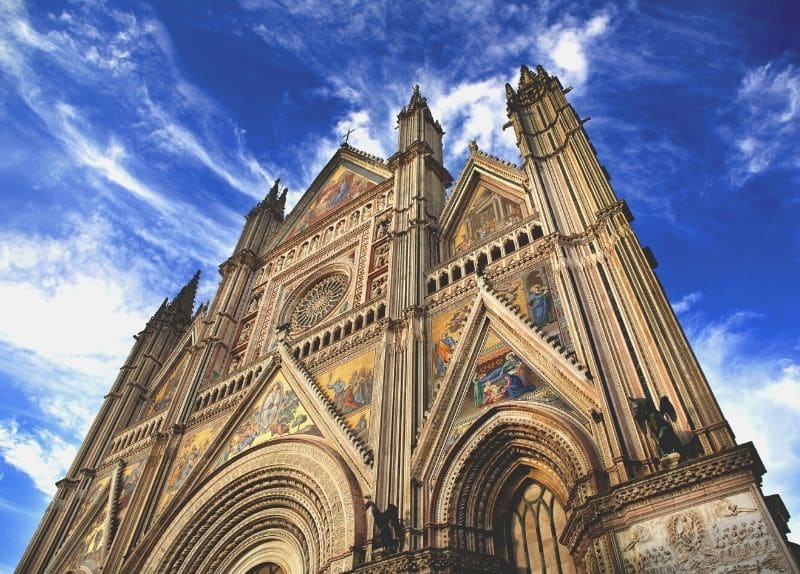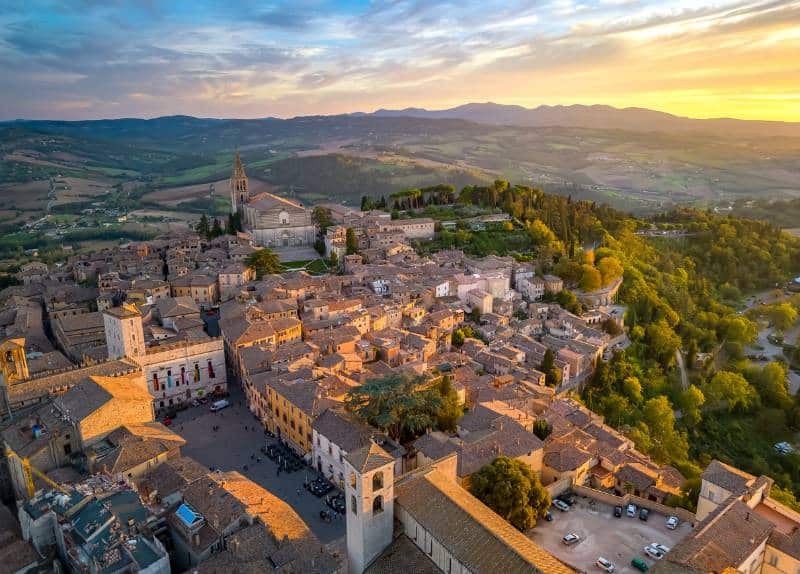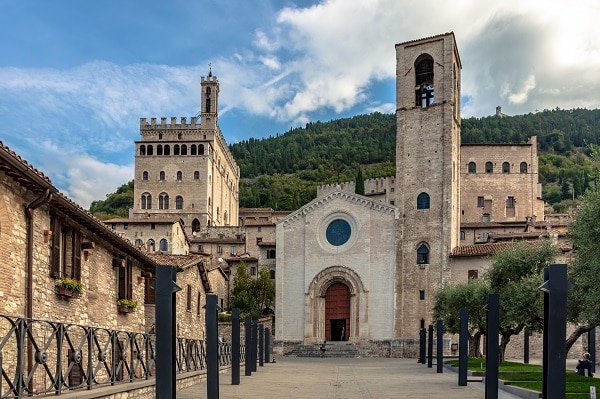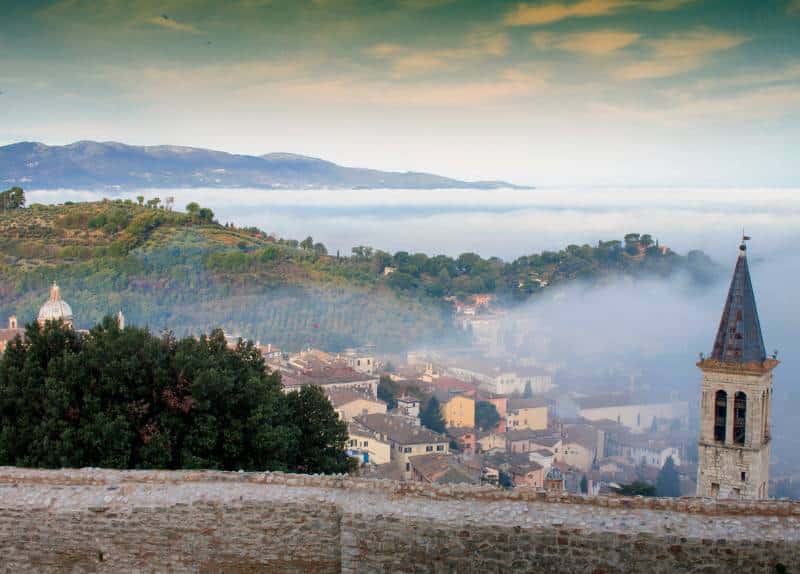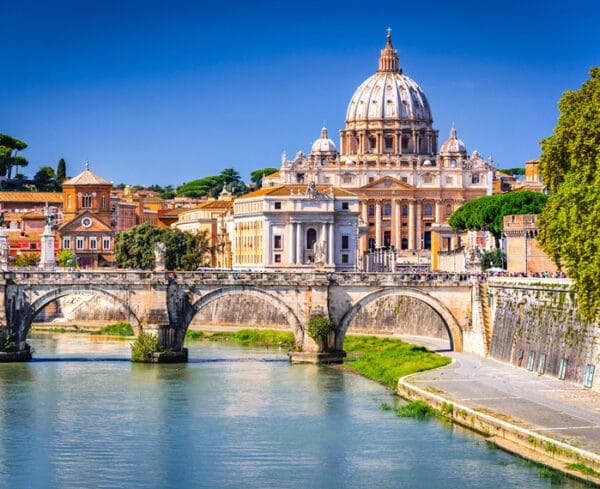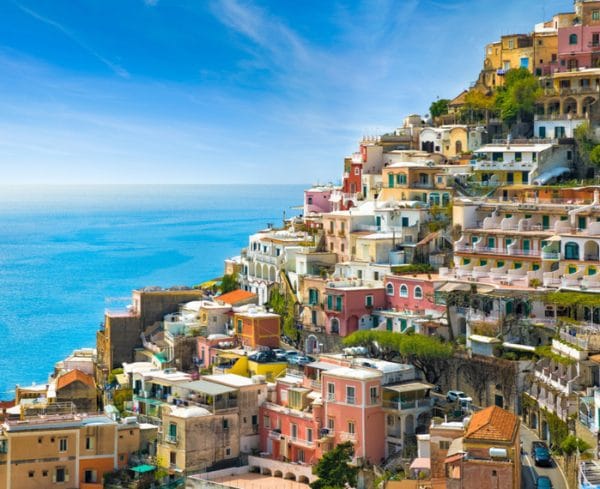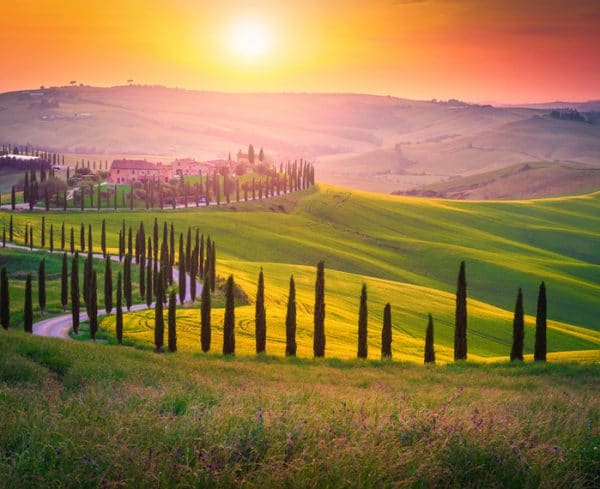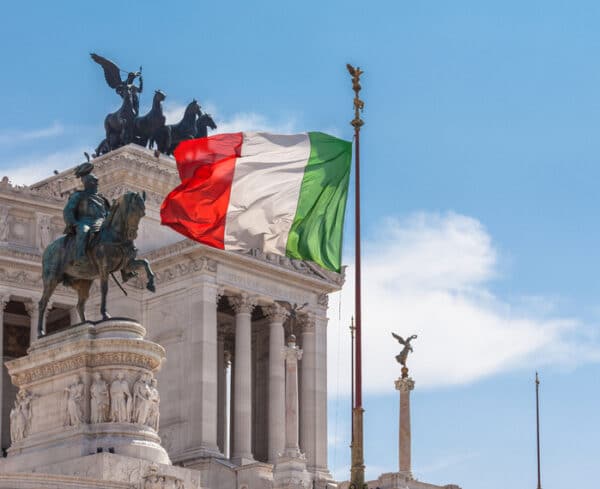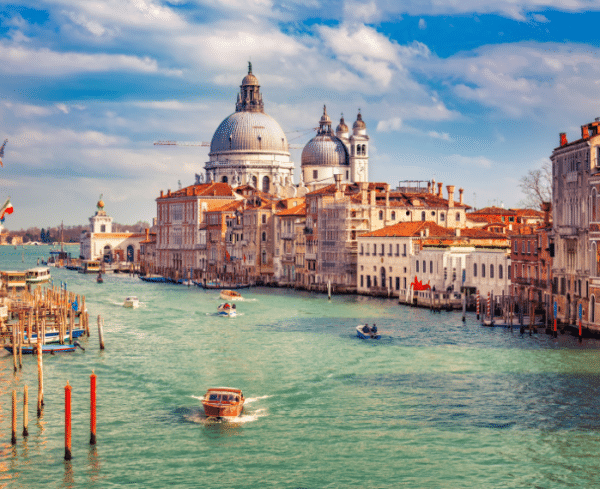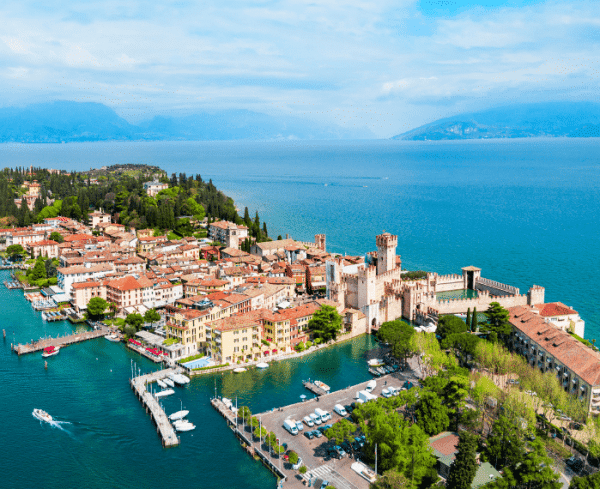6 days, hotel and transfers included
Summary
Immerse Yourself in the Splendors of Umbria: A 5-Nights Journey through Nature, History, and Gastronomic Delights
Begin your journey in the medieval town of Narni, continue to the vibrant city of Perugia, visit the picturesque town of Spello, renowned for its flower-lined streets and experience the spiritual aura of Assisi, the birthplace of Saint Francis.
Marvel at the majestic city of Orvieto, delve into the medieval charm of Todi, immerse yourself in the rich history of Gubbio and end your journey in the captivating town of Spoleto, home to a magnificent Roman theater, picturesque alleys, and a majestic cathedral.
Tour program
Arrival in Rome - Narni
- The driver will welcome you at the airport arrivals area and take you to Narni
- Lunch in restaurant on the way to Narni
- Arrival in Narni, meeting with the guide and visit (2 hours)
Guided visit of Narni
- Afternoon tour, guided tour of Narni
Narni is a small village in Umbria. Youwill begin exploring Piazza Garibaldi, formerly called Piazza del Lago. You’ll visit the Concattedrale di San Giovenale with its four beautiful and majestic aisles and its altar with canopy; don’t miss the early Christian shrine in which the patron saint of Narni, San Giovenale, was buried. We will also see Palazzo dei Priori, Painted Wall, located in the Piazza of the same name. In the Piazza there are other important buildings, as Palazzo Comunale. One of the most important church is Chiesa di Santa Maria Impensole.
- Transfer to hotel in Perugia
- Accommodation in 4* hotel
- Dinner and overnight
Walking Tour of Perugia
- Breakfast at the hotel
- Meeting with the guide and walking tour of Perugia (3 hours)
- Lunch in a restaurant
The guide will accompany us in the visit of Perugia starting from Piazza IV Novembre where stand out the Fontana Maggiore of the thirteenth century and the original side facade of the cathedral of San Lorenzo del 400. We will continue the walk towards the artery of the town or Corso Vannucci, characteristic especially for the many chocolate shops until you get to its nerve point Palazzo dei Priori where the National Gallery of Umbria is located.
Transfer to Spello
- Walking tour (2 hours)
Spello is called the city of flowers and is known for the magnificent flower arrangements created every year on the occasion of Corpus Christi. Paintings of flower petals that are real works of art, made by artists and inhabitants of the village.
Return to Perugia
- Transfer to Perugia
- Dinner and overnight stay
Assisi
- Breakfast at the hotel, meeting with the driver and transfer to Assisi
- Guided tour of Assisi
Located on a hill below the top of Mount Subasio, the fabulous Umbrian city of Assisi is the most famous pilgrimage site in Italy. Born in the village in 1182, Francis founded the Franciscan order to which he gave his name in 1210. Before its birth, Assisi had been settled by ancient Umbrian civilizations, and later became a Roman city.
Thanks to this rich history and blend of incredible architecture and art, it is a multi-faceted city. With this walking tour of about two hours, we will discover its particularities and historical and architectural beauties. We will pay particular attention to the two churches of the Basilica of Santa Chiara and the Papal Basilica of San Francesco, built between 1228 and 1253.
- Lunch in restaurant
Transfer to Santa Maria degli Angeli
- Transfer to Santa Maria degli Angeli
- Visit of the Basilica
The Basilica of S. Maria degli Angeli was built between 1569 and 1679. It incorporates the structures of the Franciscan monastery built near the Porziuncola.
At the conclusion of the Council of Trent, Pius V wanted the construction of the basilica for two reasons: to recognize the importance of the order of Franciscan Minorite and to welcome pilgrims who still flock there on the occasion of the Indulgence of the Pardon (July 31-August 2) established by St. Francis.
- Return to Perugia, dinner and overnight stay
Oriveto
- Breakfast at the hotel, meeting with the driver and transfer to Orvieto
- Guided tour of Orvieto
Orvieto is the Umbrian town in the province of Terni that stands on a tuff cliff.
With this walking tour you will appreciate one of the oldest Etruscan settlements in Italy, we will take you to explore the characteristic alleys of the village, to discover small gems and wonderful views.
We will start to discover the Cathedral of Orvieto, considered one of the most beautiful in Italy, colorful example of Gothic art, rich in works of art with bright and bright colors.
- Lunch in a typical restaurant
Todi
- Transfer to Todi and guided tour
In the afternoon we will visit the historic center of Todi. Todi is a town surrounded by medieval walls, one of the terraces of Umbria.
Together with our guide we will take a walk inside the walls, to discover hidden sights and imposing beauties, such as the Piazza del Popolo and the Palazzo del Capitano. We will visit the Cathedral of Santissima Annunziata, the Cathedral of Todi, built on the remains of a Roman temple, on which stands out the beautiful rose window, completed in 1523. The stained glass windows are not the original ones of the past, but the result of restoration works of the nineteenth century.
- Return to the hotel
- Dinner and overnight stay
Gubbio
- Breakfast at the hotel, meeting with the driver and transfer to Gubbio
- Guided tour of Gubbio
Gubbio is known as the city of stone, the wolf of San Francesco, the Corsa dei Ceri and the largest Christmas tree in the world.
You will take a walk in the city center, visiting the Piazza Grande and the buildings (from the outside) that make it famous, such as the Palazzo dei Consoli, the Palazzo Pretorio, the Cathedral and the Palazzo del Bargello and the famous Fontana del Bargello.
- Lunch in a restaurant
- Take the funicular from Gubbio to the Basilica of Sant’Ubaldo
Ticket to be paid on the spot: 5€ per person roundtrip.
Gubbio
With the funicular you will reach the Basilica in just 6 minutes, while enjoying amazing panoramas from the top.
Built on top of the steep Ingino Mountain, at the foot of which extends the city, is the building that houses the bronze urn containing the body of the patron saint Ubaldo. The basilica is also known for being the arrival point of the famous race of candles, a feast for the glorification of Saint Ubaldo. From the cloister, with sixteenth-century frescoes, you can access the inside of the church enriched by frescoes of the sixteenth-eighteenth century.
- Return to Gubbio using the funicular
- Transfer to the hotel, dinner and overnight
Spoleto
- Breakfast at the hotel and check-out
- Meeting with the driver and transfer to Spoleto
You will see, among the remains dating back to Roman time, a fine stretch of a still-standing pre-Roman dry-stone fortification surviving of city walls. The Romans built temples, forum, arches and most of them are still visible as a strata in the city center. Ou will take a look at the Duomo (Cathedral) where even Filippo Lippi from Florence, one of the most significant Renaissance painters, did work in the 15th century. In the Cathedral you will see his frescos about Mary’s life together with a splendid 12th-13th mosaic floor and even a chapel decorated by Pinturicchio, a later but not less important Renaissance painter from Perugia. The duomo’s square works also as a setting for some concerts of Festival dei Due Mondi which takes place every year between the end of June and the first half of July. During that time Spoleto becomes a fully artistic city.
Lunch and return
- Lunch in a restaurant
- End of tour, transfer to the Airport 3 hours before the flight
Price and conditions
Tour on request for groups or small groups (min. 10 participants)
To ask more write us > WhatsApp or fill the > Contact Form
Our travel specialist will answer you in short time!
Included:
- Transfers: from Rome FCO airport to Narni to hotel in Perugia; from Perugia to Spello and return; from Perugia to Assisi, Santa Maria degli Angeli and return; from Perugia to Orvieto, Todi and return; from Perugia to Gubbio and return; from Perugia to Spoleto; from Spoleto to Rome FCO airport
- Accommodation in 4* hotel with breakfast included.
- Lunches in restaurant 3-courses menu with beverage
- Dinners: in hotel if the group stays at Relais dell’Olmo or Giò Wine and Jazz hotels; in restaurant outside if the group stays in Locanda della posta Boutique hotel
- English-language guided tours: Narni (2 hours); Perugia (3 hours); Spello (2 hours); Assisi and Santa Maria degli Angeli (4 hours); Gubbio and Sant’Ubaldo (4 hours); Orvieto and Todi (5 hours); Spoleto (3 hours)
- Entrance fee: Basilica San Francesco; Santa Maria degli Angeli; Duomo Orvieto
- Orvieto Funicular roundtrip
- Headphones connected to the guide
- City tax
Not included:
- Tips and personal extras
- Everything that is not in the included section
- Gubbio funicular to be paid on the spot: 5€ per person
This tour is on request for individuals and groups.

